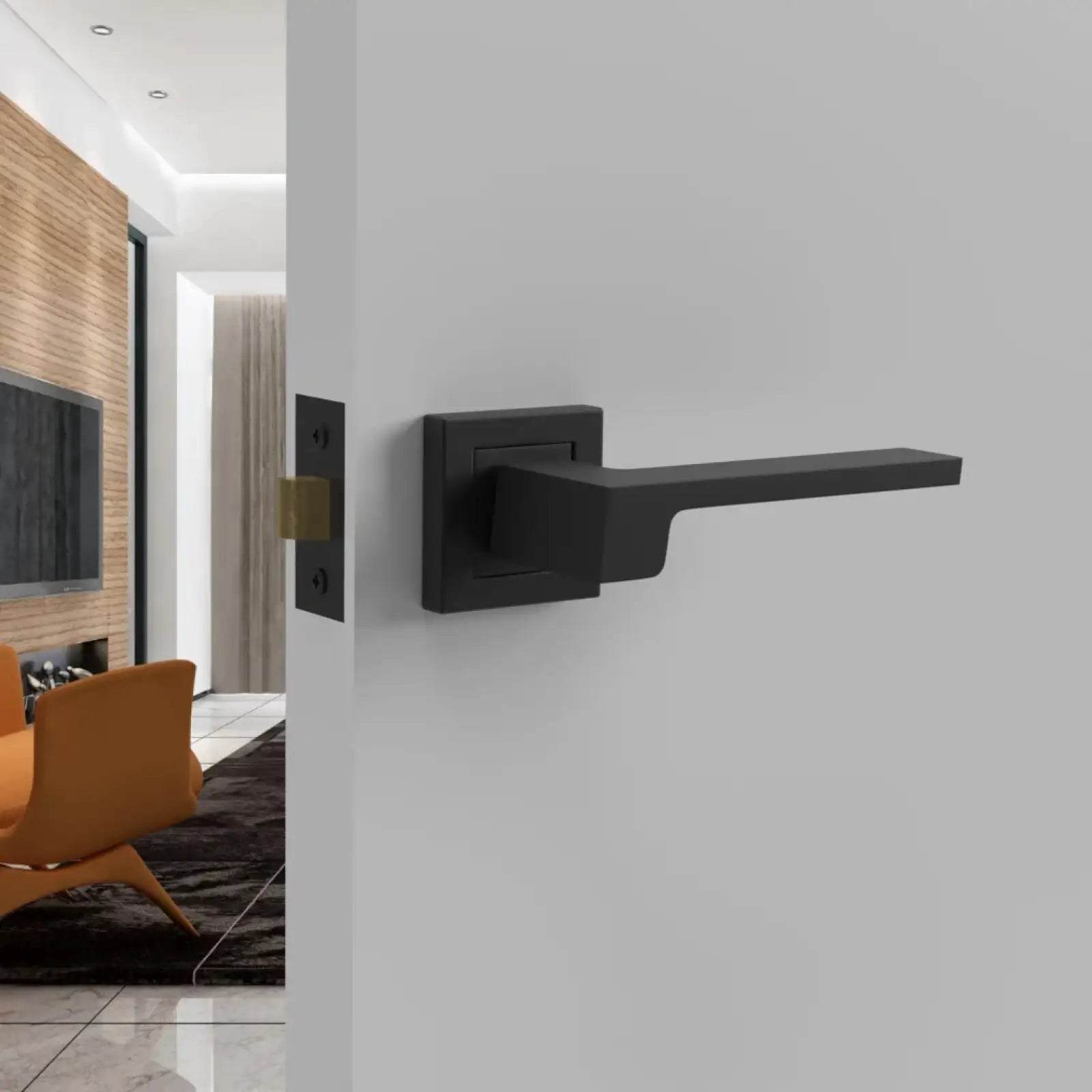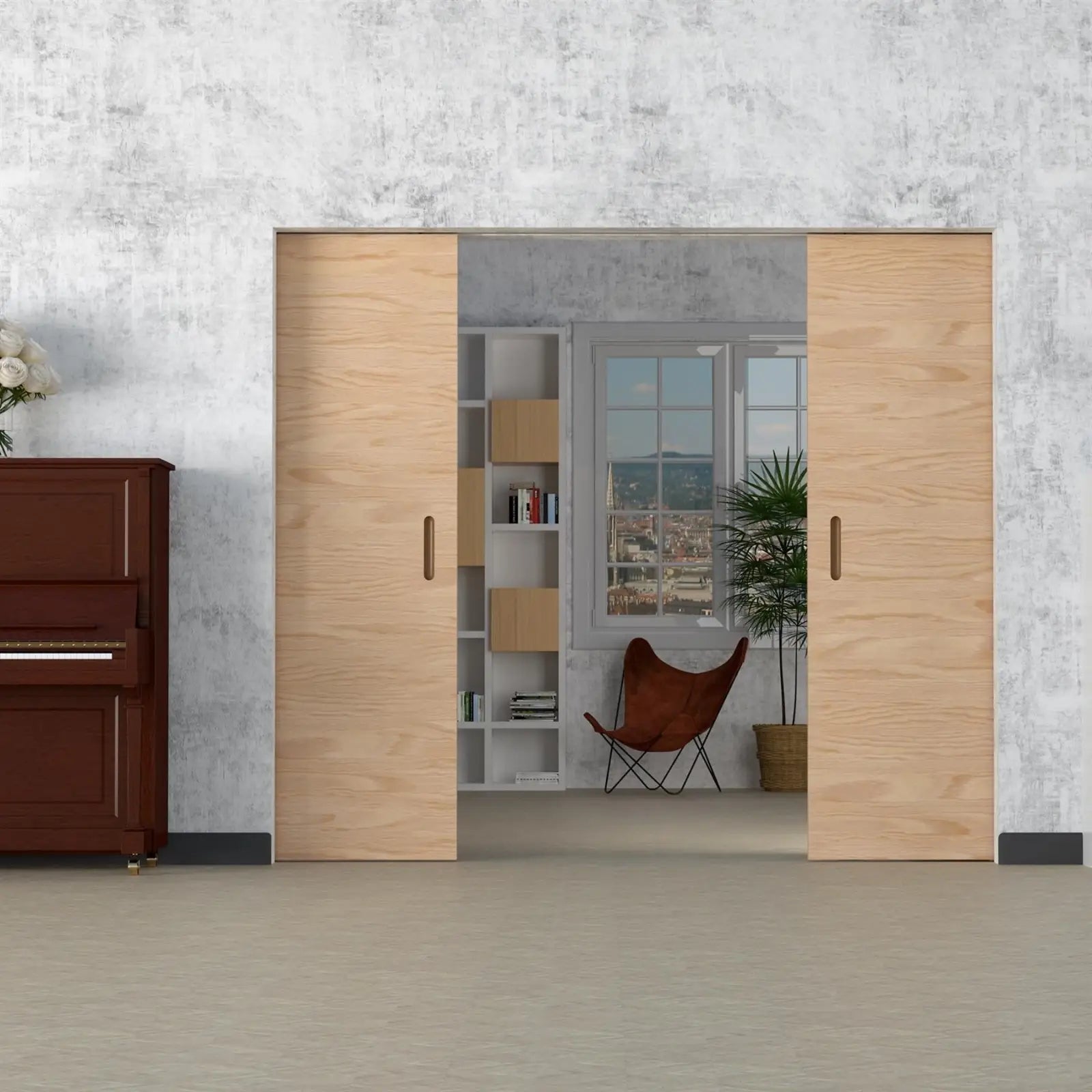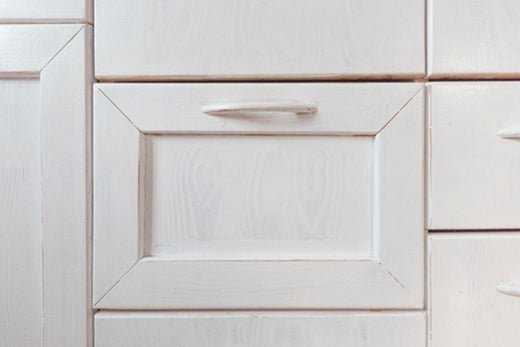Can You Put Handles on a Handleless Kitchen?
Handleless kitchens offer a minimalist, streamlined look that many homeowners love. However, if you’ve moved into a home with a handleless kitchen or simply had a change in taste, you may be wondering, “Can you put handles on a handleless kitchen?” Luckily, adding kitchen handles to a handleless kitchen is not only possible but also practical.
In this guide, we look at some of the reasons why you would make the change to handles, how to go about installing them, and the best ways to ensure your kitchen remains stylish and functional.
How Do Handleless Kitchens Work?
Handleless kitchens feature cabinet doors and drawers designed to open without traditional handles. Handleless kitchens work using either a "push-to-open" system or a recessed lip or channel integrated into the cabinet or drawer design.
With the push-to-open system, cabinets and drawers open with a simple push on the front surface. The internal hardware has a spring-loaded or magnetic mechanism that releases the door when pressed, allowing it to open slightly. This small opening makes it easy to pull the door fully open.
The recessed grip, or J-pull design, is where a channel or lip is carved into the top or side edge of the cabinet or drawer front. This recessed area allows you to pull the door open by slipping your fingers into the channel and gently pulling forward. Recessed grips can be hidden on the inside edge of the door for an even more minimalist look.

Why Homeowners Choose Handleless Kitchens
Homeowners choose handleless kitchens for various reasons, from achieving a modern look to optimising small spaces. The appeal often lies in the clean lines and the subtle, uninterrupted flow of cabinetry.
Sleek, Modern Design
Handless kitchens suit homes that lean towards a minimalist aesthetic, where simplicity and clean lines are prioritised. The absence of handles results in a smooth, uninterrupted surface that allows the focus to remain on the cabinetry’s materials and colours. Handleless kitchens also have a futuristic feel, which makes them a popular choice for new builds and renovations.
Great for Small Kitchens
In small kitchens, every centimetre counts. The streamlined design of handleless cabinetry maximises space, making the kitchen feel more open and less cluttered. Without protruding handles, you can move around freely and comfortably without the risk of catching clothing or bumping into metal handles.
Safer Option for Young Children
Handleless kitchens offer a family-friendly design that can be safer for homes with young children. With no handles to grab onto, kids are less likely to access cabinets that might contain sharp or hazardous items. The absence of handles also means there’s no risk of little ones catching their clothes or sleeves, reducing the chances of minor accidents.
Why Bring Kitchen Handles Back?
Despite the popularity of handleless kitchens, some homeowners eventually decide to add kitchen handles. Let’s find out why:
Improved Ease of Use
Adding handles to your handleless kitchen can make daily use much easier, especially if push-to-open or recessed grips feel inconvenient. Handles allow you to open cabinets quickly, which is a real help when you’re busy cooking or juggling multiple tasks. They also add functionality without compromising your kitchen's sleek design, making life simpler for everyone, including those with limited mobility or strength.
Showcase Personal Style
Handles are like your kitchen’s jewellery, adding that perfect finishing touch to showcase your personal style. Whether you prefer sleek matt black pulls or gleaming gold knobs, handles offer endless options to complement or contrast your cabinetry. Choosing a unique finish or shape lets you bring your vision to life, making your kitchen truly feel like your own.

Accessibility Needs
If your household has accessibility needs, adding handles can make a real difference. Larger pulls or textured knurled handles provide an easy grip, making cabinets and drawers simpler to open. For anyone with mobility or dexterity challenges, handles bring added comfort and ease to daily kitchen tasks.
Upgraded Look Without Full Renovation
Adding handles is an easy, budget-friendly way to refresh your kitchen’s look without a major renovation. A new set of handles can instantly bring a classic warmth or enhance the modern edge, depending on your chosen style. With a simple update, you can keep your kitchen feeling fresh and inviting.
How Can You Put Handles on a Handleless Kitchen?
If you’re ready to add handles to your handleless kitchen, follow these easy steps on how to attach kitchen cabinet handles to your cabinetry:
Choose Your Handles
Here’s the fun part—you get to start fresh and choose new handles that elevate your kitchen’s style! Look for options that are comfortable to grip and harmonise with your cabinets, whether you’re leaning toward a sleek, modern vibe or a timeless, classic feel.
Gather Your Tools
You’ll need a measuring tape, pencil, drill, drill bits, a screwdriver, and a handle template precise alignment.
Choose and Mark Handle Placement
Proper kitchen handle placement ensures your handles are easy to reach and enhances the overall look of your kitchen. The ideal position often depends on the type of cabinetry you have, like base cabinets or tall pantry doors, as well as the handles you’ve chosen, whether they’re bar pulls or small knobs.
To mark placement, use a handle template or ruler to keep measurements consistent. For drawers, center the handles horizontally, while for cabinets, position them 2-5 cm from the edge. Mark each spot with a pencil for accuracy before drilling.
Drill Pilot Holes
Using a small drill bit, carefully drill pilot holes at each mark. Pilot holes prevent wood from splitting and make it easier to attach the handles. Hold the drill steady and drill slowly to avoid damaging the cabinet surface.
Attach the Handles
Position each handle over the drilled holes and insert the screws from the back of the cabinet or drawer front. Tighten each screw with a screwdriver to ensure a firm hold, but avoid over-tightening to prevent damage to the cabinet face.
Update Your Handleless Kitchen with Decor and Decor
Explore our curated collection of kitchen handles to bring a touch of practicality and charm to your kitchen. With the right selection, you can transform your space, making it more user-friendly while preserving the minimalist appeal of a handleless kitchen.
FAQs
What are the disadvantages of handleless kitchens?
Handleless kitchens can be less convenient to use, particularly in busy households or for those with limited mobility. Push-to-open or recessed mechanisms may not be as quick or easy as handles.
Do handleless kitchens get dirty?
Handleless kitchens can show dirt and fingerprints more readily, especially on high-gloss or matte surfaces. Regular cleaning is necessary to maintain a pristine look.
Are handleless kitchens going out of fashion?
Handleless kitchens remain popular, but trends are shifting toward more customised and versatile designs that allow personal touches, like adding handles. The minimalist appeal of handleless kitchens still attracts many, though some prefer the functionality and style options handles offer.






